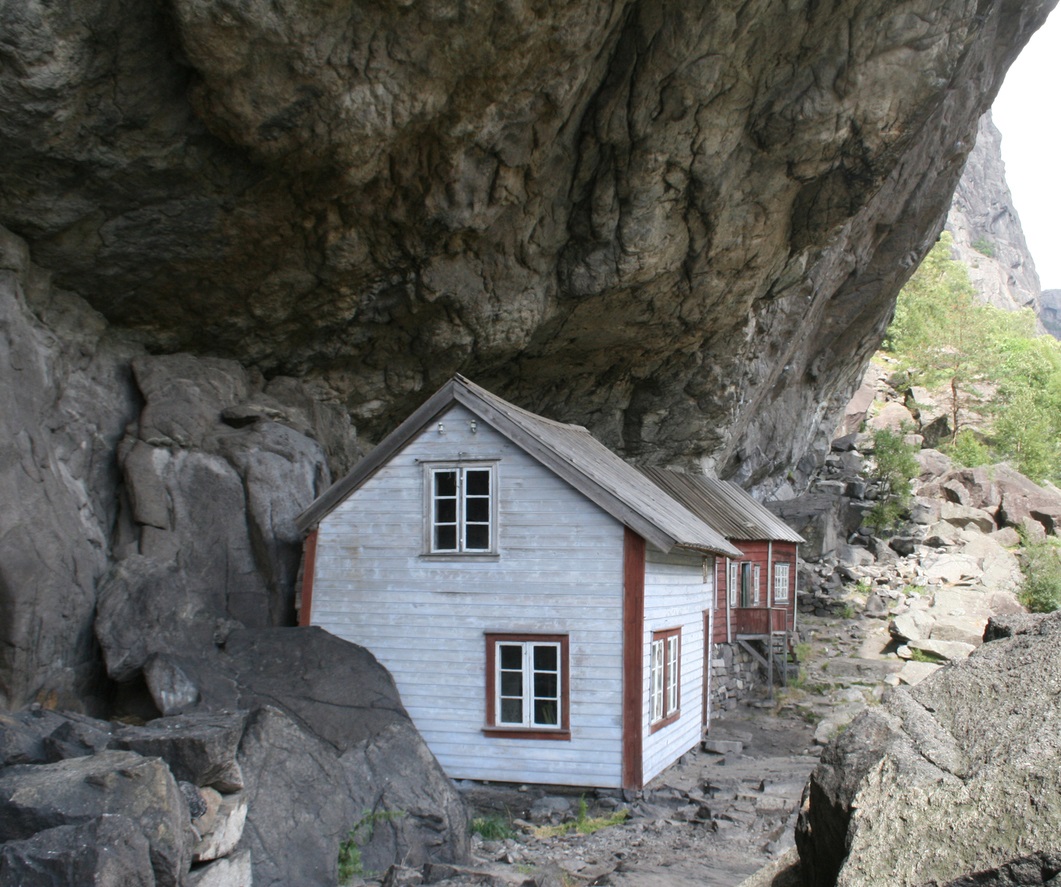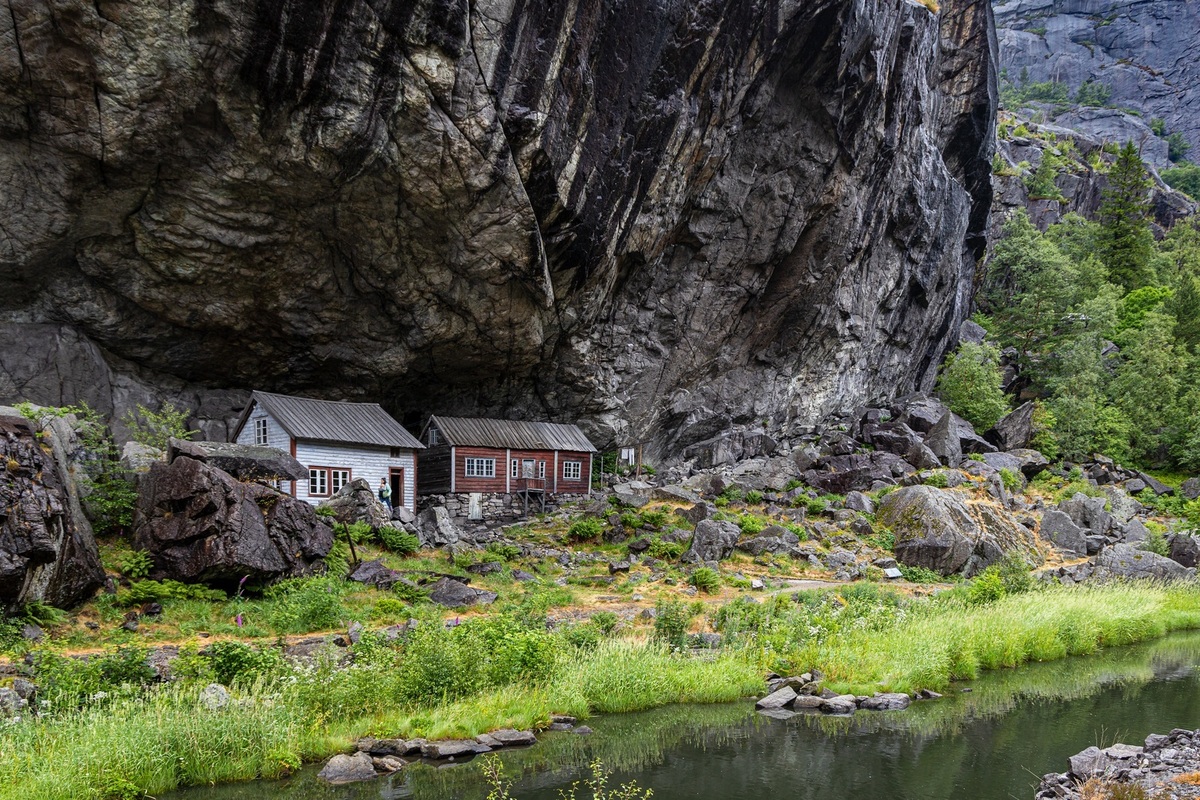Tucked beneath a massive rock overhang in Norway’s scenic Jøssingfjord, Helleren Farm stands as a striking example of human resilience and harmony with nature. This old farm, nestled under the rock, is a testament to the ingenious use of natural landscapes in architecture.

Helleren Farm, located in Sokndal municipality along the North Sea Route, is a cultural heritage site featuring two traditional houses from the 1800s, uniquely built under a vast rock shelter. This natural rock forms a protective roof over the houses, preserving them for centuries. The rock shelter, known as Helleren or Hedlaren, spans 60 meters in length and 10 meters in depth and has been a human refuge since the Stone Age.

The two houses at Helleren Farm, possibly incorporating parts dating back to the 1500s, are prime examples of Norwegian rural architecture. Their wooden structures, lacking conventional roofs, have withstood the test of time under the rock’s shelter. These houses were inhabited until the 1920s by residents who lived without modern amenities like electricity or running water.

Now managed by Dalane Folkemuseum, Helleren Farm serves as a museum, allowing visitors to step back in time and experience life in these unique dwellings. The surrounding Jøssingfjord, with its steep mountains and large stone scree, adds to the farm’s allure. The fjord is also historically significant, being the site of the Altmark affair during World War II.
Visitors to Helleren Farm can easily access it by parking across the river and walking for five minutes. The farm is a delicate and valuable cultural heritage site, offering a window into the past and a lesson in sustainable living with nature.






